After our time in Danum Valley, we spent one more night in Lahad Datu at the wonderful Bike Tours Bed and Breakfast where we enjoyed another amazing dinner of local cuisine prepared by our hosts. After a delicious homemade breakfast of pancakes and fruit, we were dropped off at the minibus station in town where we waited for about an hour until enough people, eleven to be exact, showed up to fill the minibus. We then headed off toward the town of Sepilok, which was about three hours away. We were the only non-locals on the bus. The driver who did not speak much English tried to let us out at a deserted looking intersection about an hour before we reached Sepilok, but other than that it was a pleasant and uneventful ride.
Sepilok, Sabah, Malaysia
When we reached the bus drop off point, which was an intersection and not much else, there happened to be a young lady there who had just gotten off another bus and was heading to the Nature Lodge Sepilok like we were so we conveniently shared a taxi. Nature Lodge Sepilok has some chalet rooms with outdoor bathrooms, as well as some dorm style rooms.
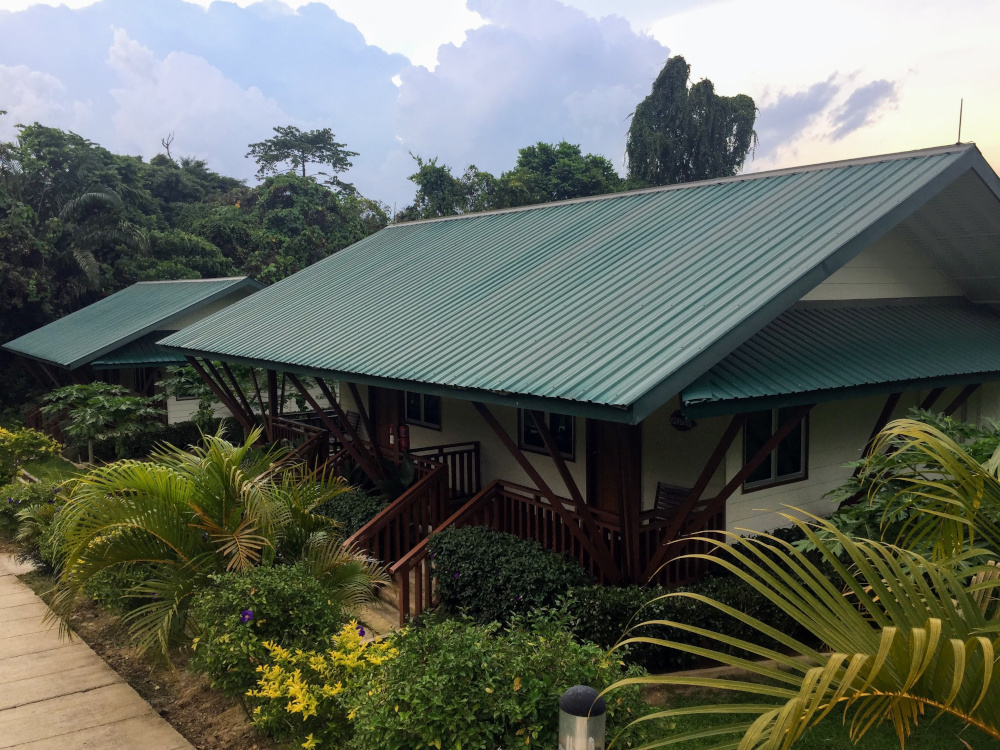
They also have an on-site restaurant that served some good vegetarian and vegan options. The outdoor bathroom and shower in our chalet room was pretty cool but we did have some critters, including a bat and some lizards visit us out there at night. The bat surprised me the first night by flying right behind my head while I was brushing my teeth.
Labuk Bay Proboscis Monkey Sanctuary
After checking into our hotel we decided to check out Labuk Bay, which we had heard was a Proboscis Monkey sanctuary about a thirty minute drive from our hotel. Our hotel provided a driver to take us and on the way we passed through a huge palm oil plantation. Our driver explained that a Chinese palm oil company that ran the plantation also owned and operated the sanctuary. Apparently they bought the land to build the palm oil plantation and when they discovered the Proboscis Monkeys that lived on the property, they set aside some forest land for the monkeys to continue living on and set up the sanctuary to charge admission for people to come see them. The monkeys have land to live on and they are fed fruit and bread daily but receive no medical care. It was hard for me to understand how this could be called a sanctuary when it seemed to really just be a feeding platform.
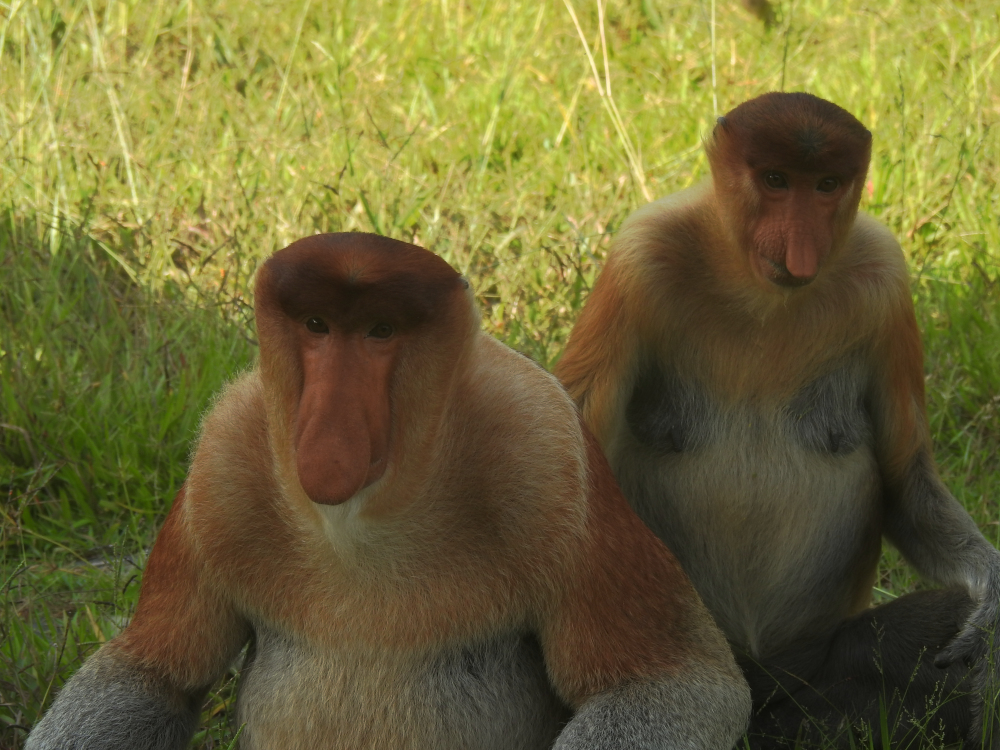
The monkeys are amazing to see up close and they did not seem fearful of humans. Proboscis males have a huge nose and a pot belly. They like to sit spread eagle with their knees bent. The females have upturned noses and are smaller than the males.

They are some of the most unusual looking monkeys I have ever seen with their orange fur. There were also many silver leaf monkeys hanging around that had an adorable baby with them, which the adult monkeys took turns hugging and holding. Baby silver leaf monkeys have bright orange fur until they get older and turn dark gray.
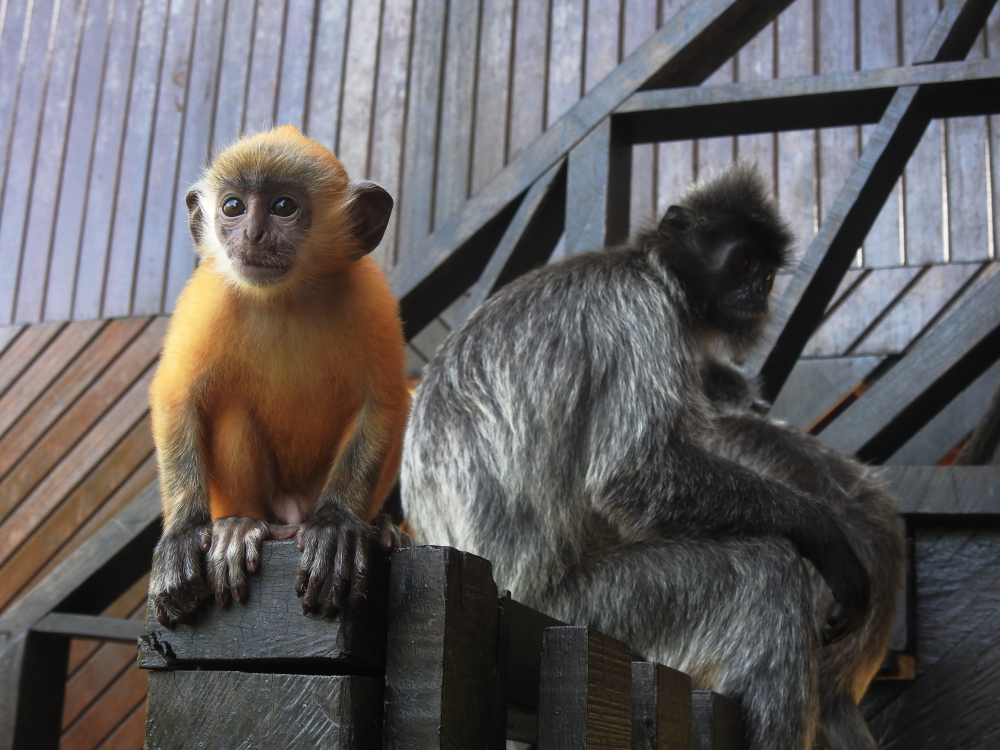

Although the primates we saw were fantastic, after our visit I did not have the best feeling about Labuk Bay. I did not feel great about giving money to a palm oil company to see monkeys who have had much of their natural habitat destroyed by the palm oil industry. The animals did not seem to be mistreated at Labuk Bay but it does seem misleading to say it is a sanctuary.

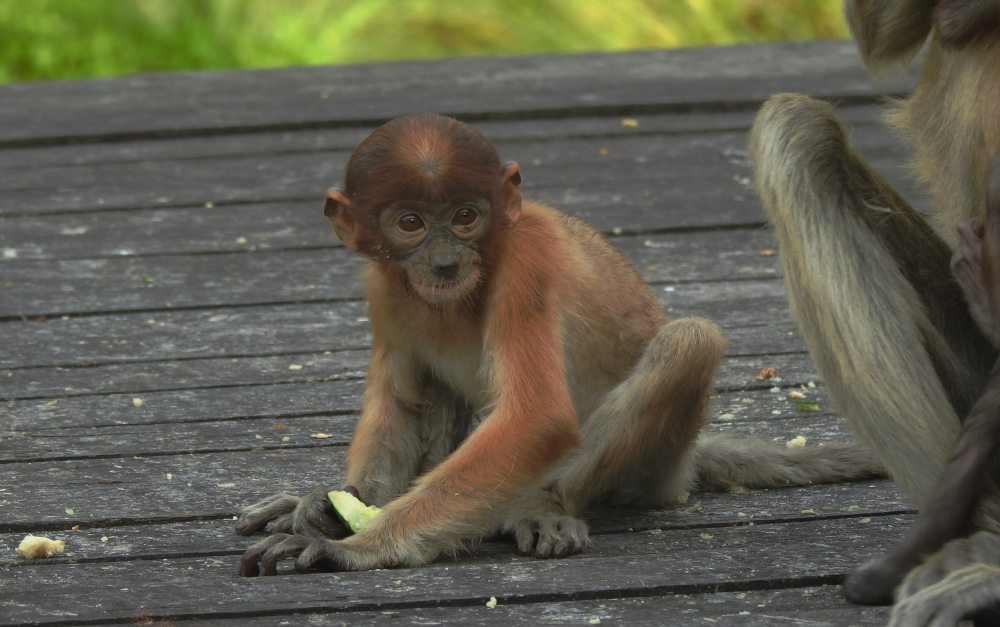

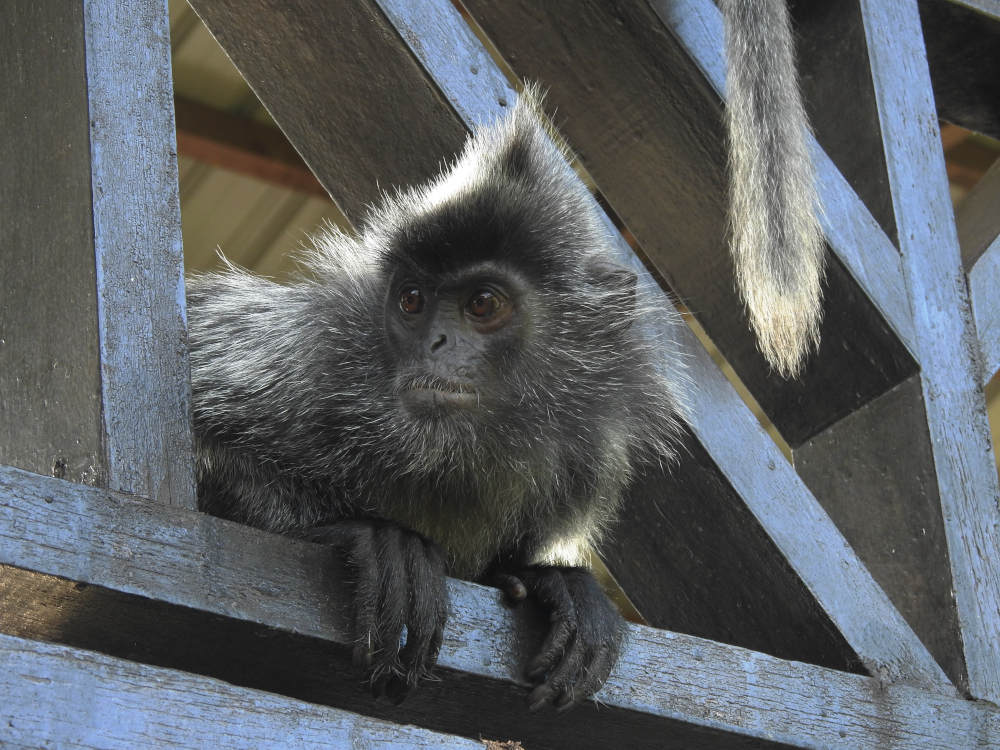

Sepilok Orangutan Rehabilitation Centre
The next day we walked from our hotel to the Sepilok Orangutan Rehabilitation Centre just up the street. Thankfully this was a much better experience than the previous day and the centre seems to be a fantastic operation run by people with the animals’ best interests at heart. The centre is owned and managed by the Sabah Wildlife Department and receives support from the UK-based Orangutan Appeal. The centre’s mission is to rescue, care for, and release orphaned orangutans, which are critically endangered due to habitat loss, poaching, and hunting. The centre has 43 sq km of protected land within the Kabili-Sepilok Forest Reserve. About 25 young orphaned orangutans live in nurseries and others who have already been rehabilitated at the centre roam freely throughout the reserve. The centre does provide medical care to the orangutans when they arrive.

When you arrive at the centre there is a theater room where you can watch a short film about the sanctuary’s history and the work that they do, which I highly recommend. You then proceed to walk along a raised wooden boardwalk that travels through the reserve. They have a feeding platform where they put out food twice a day for the free roaming orangutans to serve as supplemental nutrition for those who want it. We observed two feedings at the platform on the same day. At the first feeding three orangutans and two pig-tailed macaque monkeys showed up to eat at the feeding platform. One was the mother with a small baby attached to her pictured above.
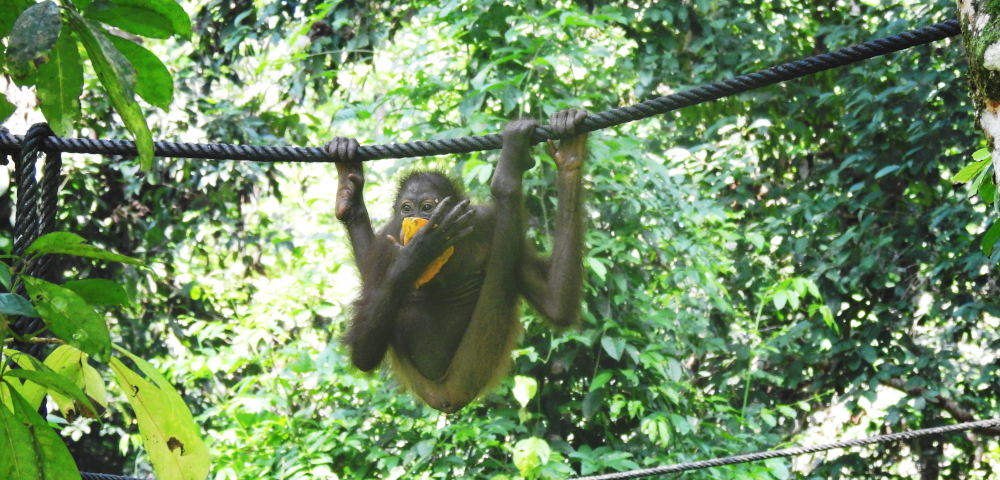

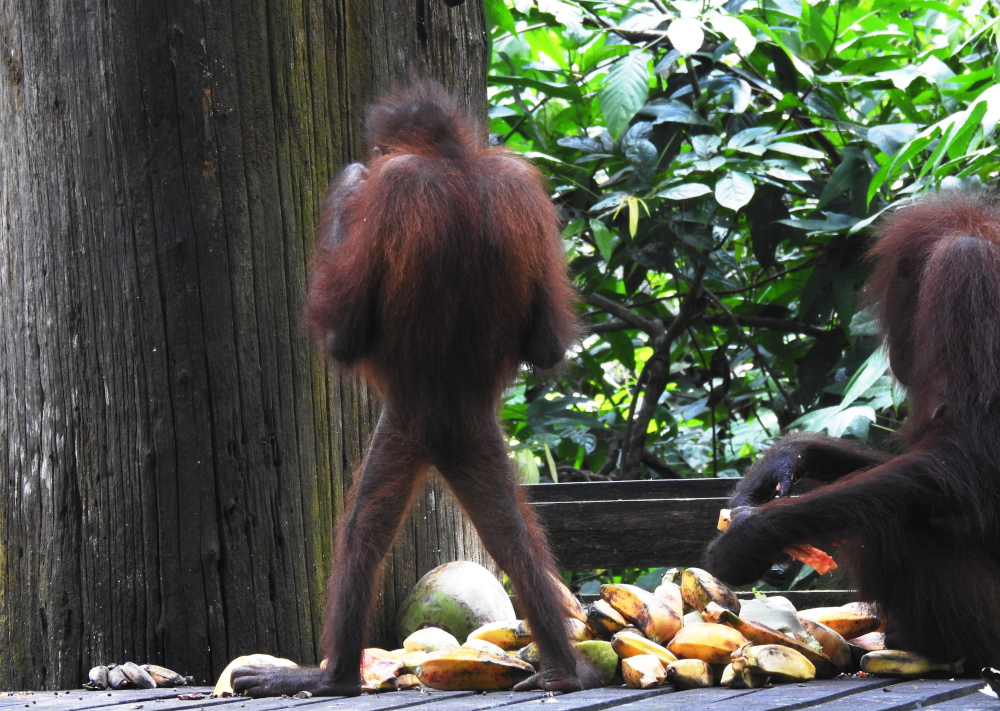
At the second feeding we attended, two orangutans came to the platform to eat, a large female and a young and highly entertaining male. These two who are pictured above played together and we wondered if they might be related. Few orangutans coming to the feedings is actually a good thing as that hopefully indicates that the others must be finding ample nutrition on their own in the forest, which is preferred.
Orangutans are the largest tree dwelling animals on the planet and they have 96.4% DNA in common with humans. They are apes not monkeys as they do not have tails. Many of the young orangutans at the centre were captured alone as babies or were kept as pets before coming to the centre. Babies are often caught alone during logging or forest clearance operations or captured by poachers to sell them in the illegal pet trade. Once the young orangutans are rehabilitated, which can take up to seven years, they are released from the nurseries at the centre into the surrounding forest reserve to fend for themselves. They can still visit the centre for a free meal at the feeding platform whenever they want to. There are no fences so they are free to roam as they please. Establishing protected forests for the orangutans to live in has been successful in helping stabilize the orangutan population in Sabah and seems to be a viable strategy to ensure their survival in Borneo.
We enjoyed watching the feedings but seeing an orangutan by chance along the boardwalk, which we did several times during our two visits, was even more fun and exciting. On our way to the second feeding, we were walking along the boardwalk when a large female orangutan with a baby on her back came out of the forest and walked along the boardwalk railing right toward us. There was no one else around except one centre employee. We backed away when she came near us to allow enough space to let her pass by peacefully. We were tickled to be able to see her at such close range with her baby just by chance.

The orangutans are highly entertaining to watch. They are obviously intelligent and quite expressive. Their resemblance to humans is striking. They have impressive strength and flexibility and watching them swing about, sometimes upside down, in the trees is quite incredible.
Sun Bear Conservation Centre
Right next door to the Orangutan Centre is the Bornean Sun Bear Conservation Centre, so we decided to check that out as well. It is a rescue and rehabilitation centre for sun bears, which we were not at all familiar with before our visit. Sun bears are the smallest bears in the world and are only found in Southeast Asia. Most of the 43 sun bears living at the centre were kept as pets in unnatural and unhealthy conditions before they were turned in to the centre. The centre has huge forest enclosures and a very nice canopy boardwalk allowing visitors to observe the bears from high above without disturbing them.
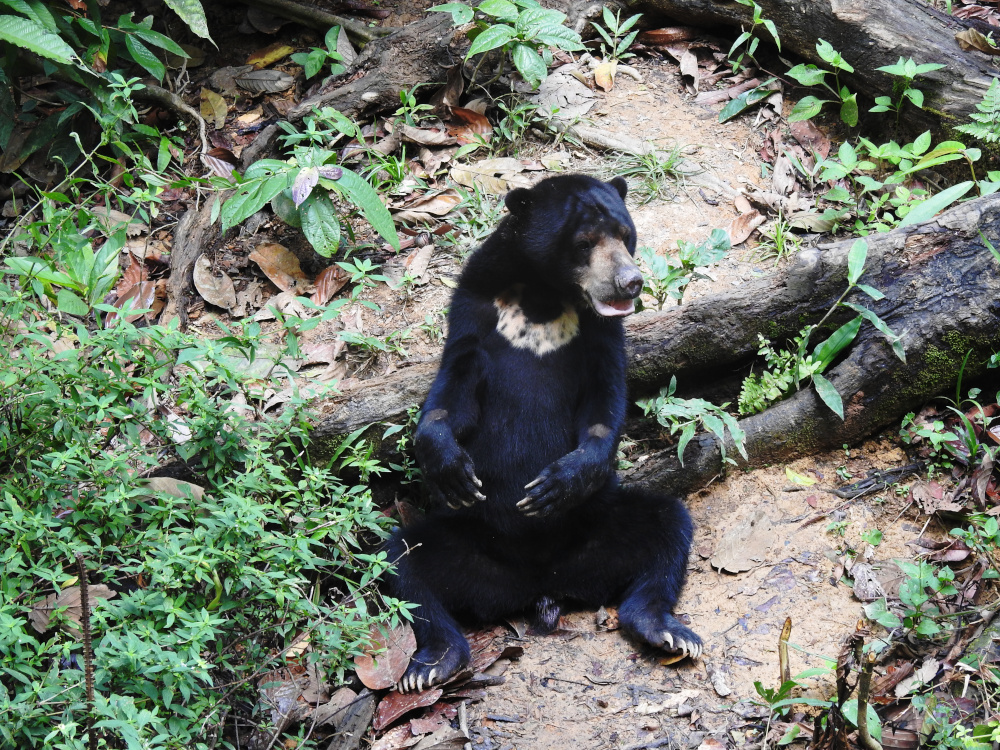

I had never seen a sun bear before and they are quite cute. Their bodies and movements resemble those of a large dog but they are wild animals with large claws and should not be kept as pets. The living environment created for the bears at the centre was very nice and looked very natural. The centre was opened in 2014 and they have successfully released seven bears into the wild to date. Both the sun bear and orangutan centres had a no human contact policy with the animals which is best for the animals if they are ever to live in the wild again. Both offer opportunities to adopt a bear or orangutan to help support their work. Below are links to both if interested.
Rainforest Discovery Centre
While in Sepilok we also visited the Rainforest Discovery Centre, which was conveniently just around the corner from our hotel and also within the Kabili-Sepilok Forest Reserve. We arrived at around 8:30 am on a Friday and practically had the place to ourselves.

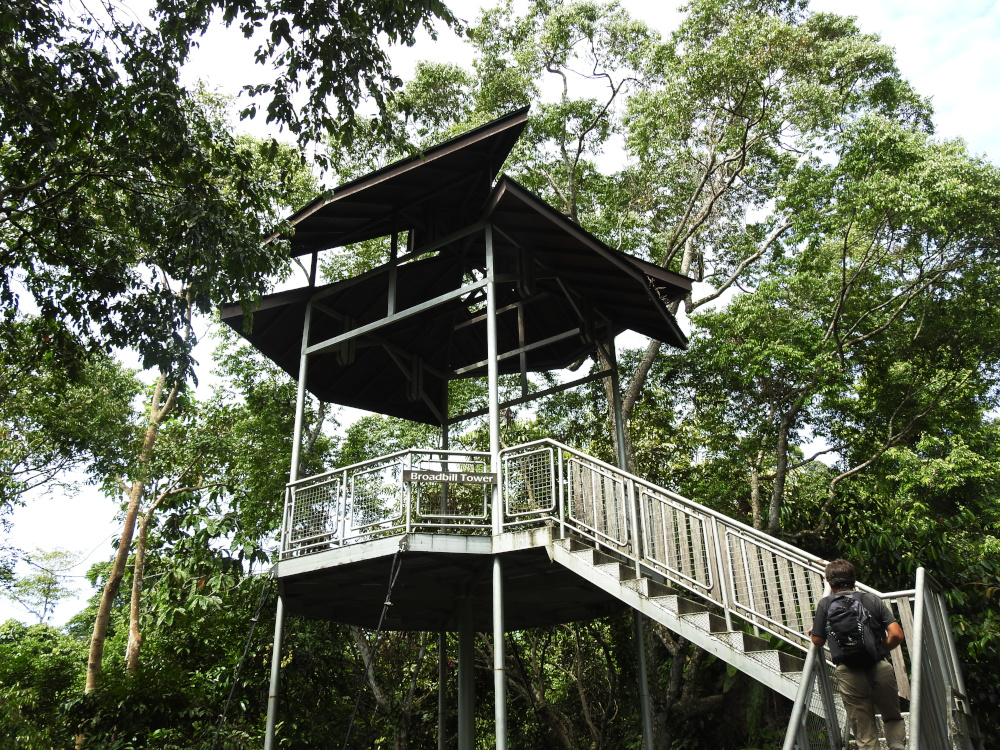
They have a nice elevated canopy walk with several towers for observing birds and wildlife. While on the canopy walk we walked right up to an orangutan sitting on the railing. After a while he climbed up into the trees and swung around before swinging away into the forest.
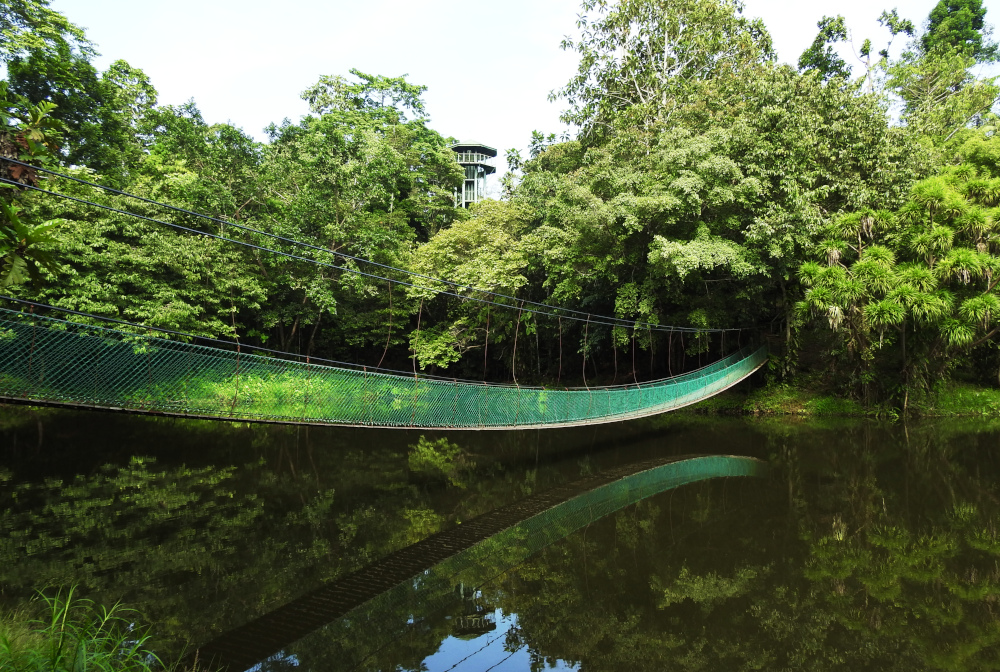
They also have a nice network of forest trails which we explored for several hours. On one trail we spotted a group of pig-tailed macaques. After watching them for a little while the alpha male in the group challenged us by hissing at us so we hurried along our way to avoid further upsetting him. We also saw one snake and one more orangutan swinging in the treetops from a distance while hiking.
The area is also a well known birding destination but we have realized we are not skilled at spotting birds. It is incredibly hot and humid in this area and just being outside during the day usually caused us to break out into a sweat. Most afternoons we took a break from being outside during the hottest part of the day in our air conditioned room. There was a big rainstorm every night we were in Sepilok so we did not experience any of the night nature walks offered but they sounded interesting. We enjoyed our visit to this area and especially enjoyed learning more about the orangutans and sun bears.
Kinabatangan River
From Sepilok we traveled a few hours by bus to the Nature Lodge Sepilok’s sister property, the Nature Lodge Kinabatangan. Upon arrival by bus we had to cross the Kinabatangan River in a small motor boat with our luggage to reach the lodge. The daily activities at Nature Lodge Kinabatangan are structured in a set schedule that includes day and night jungle walks and river cruises during the day with the earliest one starting at 6:00 am. On the river cruises we saw many wild proboscis monkeys, macaque monkeys, and silver leaf monkeys. The proboscis monkeys often live in “harem groups” in the wild where there is one male and many females. The males like to sit spread eagle up in the trees with their large bellies protruding. I guess the female monkeys find that attractive.
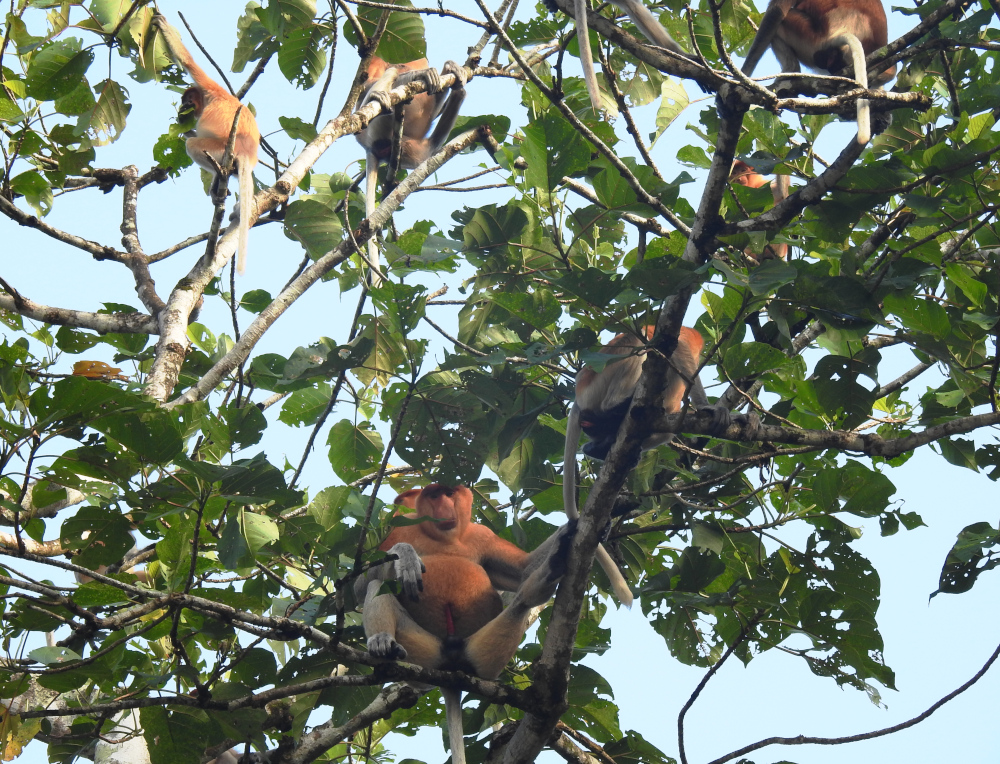
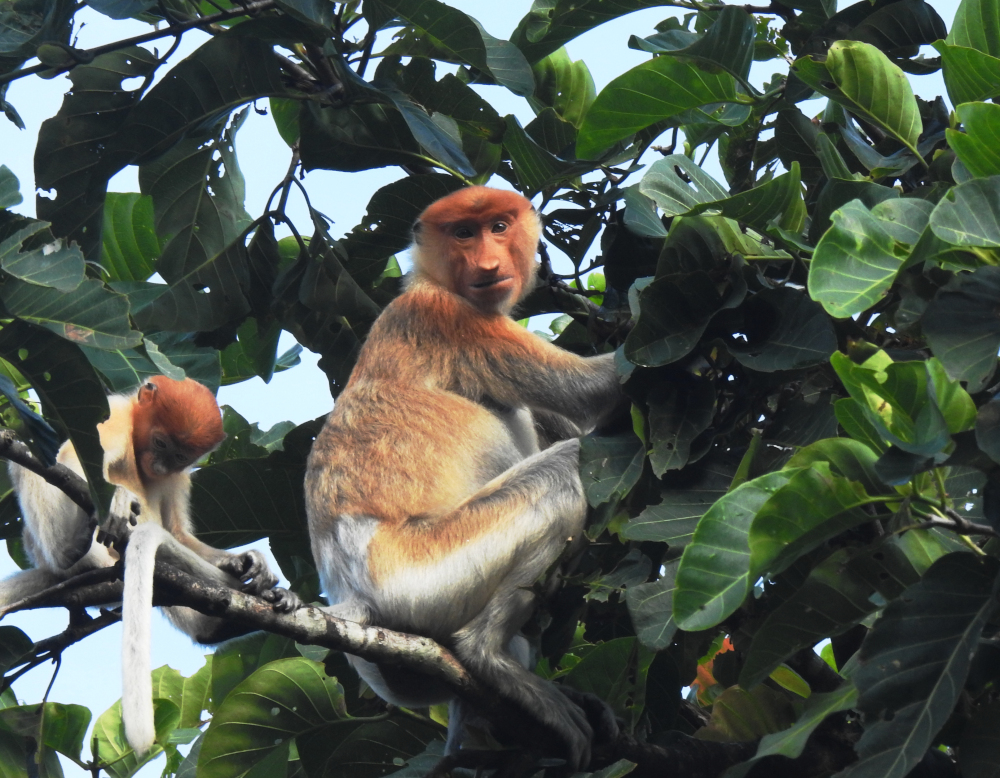
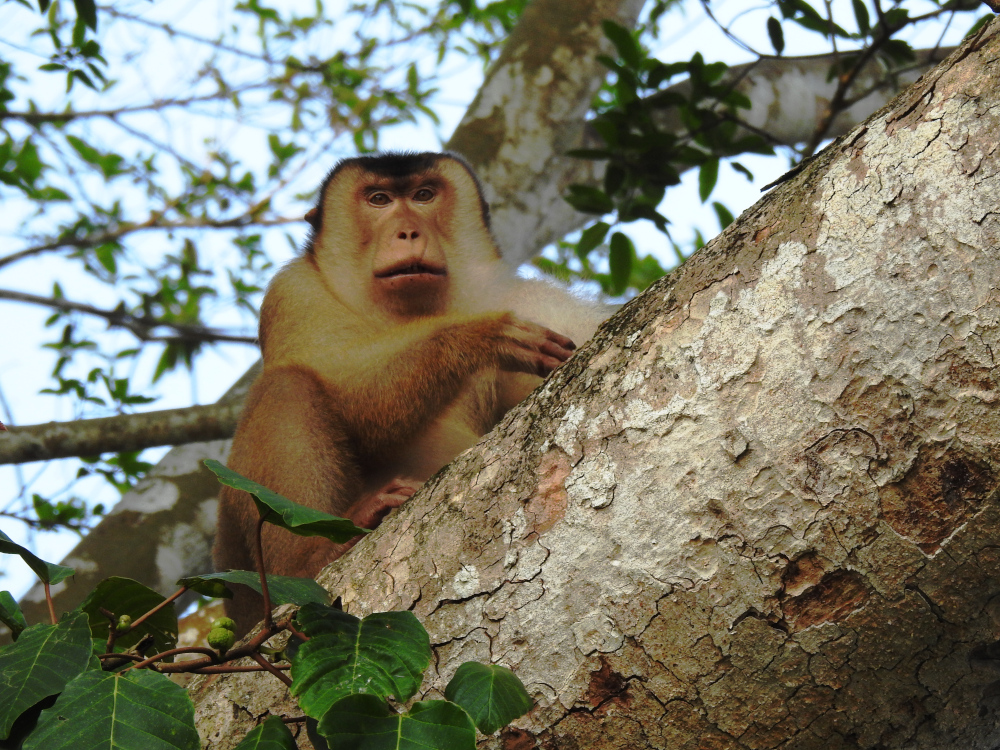
Also spotted along the river were several orangutans, hornbills, crocodiles, and eagles. Our boat was uncomfortably close to the largest crocodile I have ever seen on one morning river cruise.
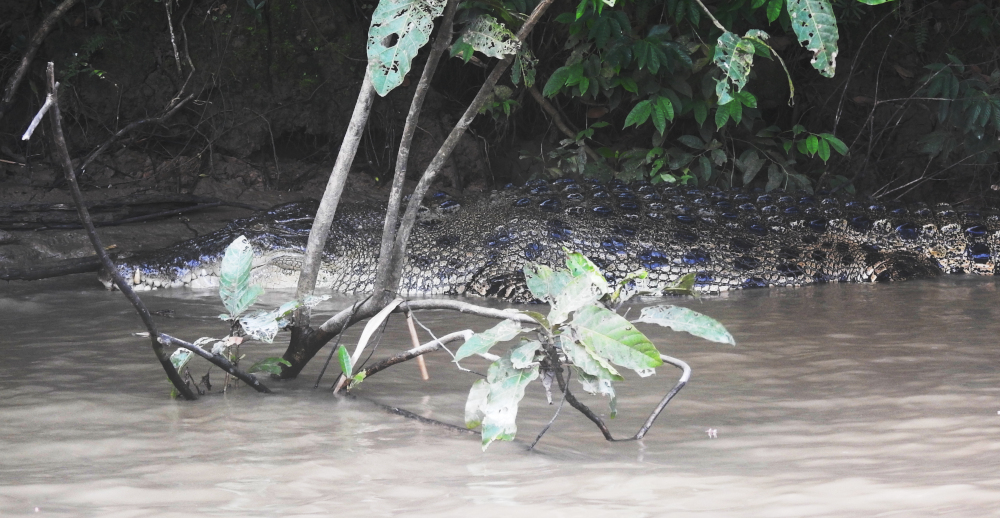
On the jungle walks we saw sleeping birds, frogs, unusual insects, and mushrooms that glowed in the dark. I could only capture a decent photo of the mushrooms during the day, the photos taken when they were glowing at night did not turn out unfortunately.

The lodge offers dorm-style accommodations and chalets. We opted for the chalet, which was rustic but comfortable and had air conditioning, a private bathroom, and a jungle view. They have jungle walk supplies such as rubber boots, binoculars, and torches for rent. We gladly rented their rubber boots so we did not have to get our own shoes muddy on the jungle walks. It rained a few times during our stay and the ground was rather muddy in the jungle.
All our meals were provided at the lodge and they happily accommodated vegans and vegetarians. Meals are served buffet style and everyone staying at the lodge dines together at the same time which provides a nice chance to meet and talk with fellow travelers. While eating our dinner one night a little lizard jumped on our table and starting licking the fruit on someone’s plate. A true jungle dining experience.
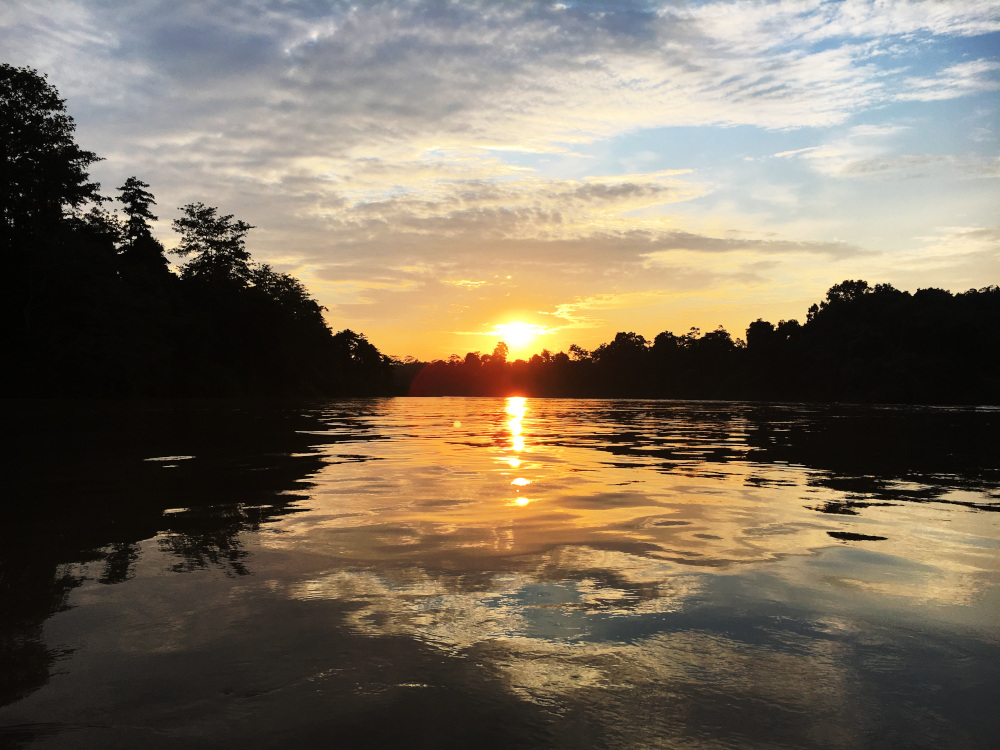
We stayed at Nature Lodge Kinabatangan for two nights and that was the perfect amount of time. During a two-night stay you have the chance to do four river cruises, two night jungle walks, and one day jungle walk. Most of the people working at the lodge are local Malaysians and they seem to value being good stewards of the environment by doing river clean ups and providing free drinking water refills to guests to cut down on single use plastic bottles. The tap water is not safe for drinking (same as almost everywhere else we have been on this trip).
There was no real wifi or cell service available during our stay, so it was nice to unplug and just enjoy nature for a few days. The forest around the river is full of life and we enjoyed seeing the animal and bird species we spotted in their natural environment. Unfortunately we did not see any pygmy elephants along the Kinabatangan River as we were hoping and it sounds like spotting them anywhere in Borneo may not be very likely but you never know. Much of Borneo’s amazing wildlife can not always be easily found and you really have to keep trying and be patient when it comes to spotting some of the interesting animals that live there. That just makes finding them that much more exciting.


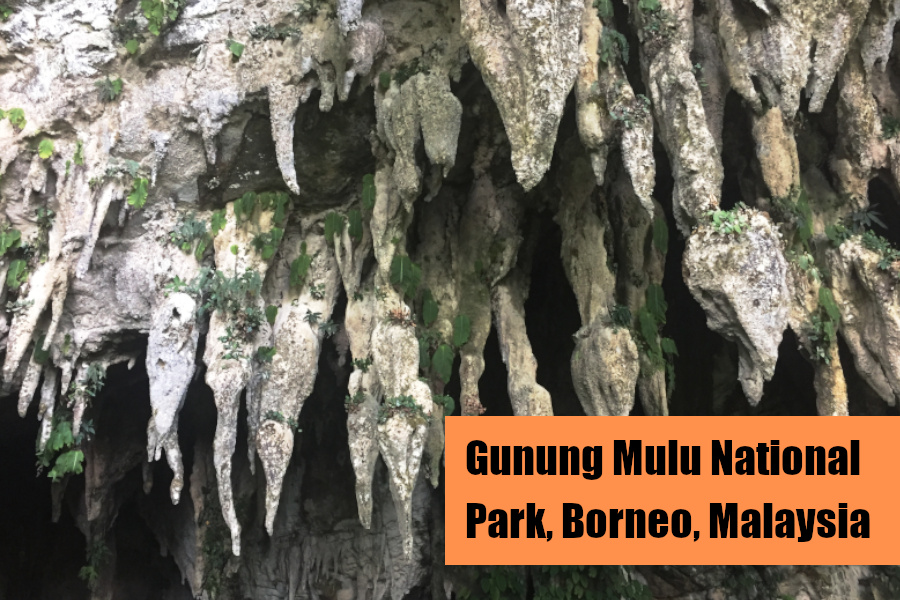
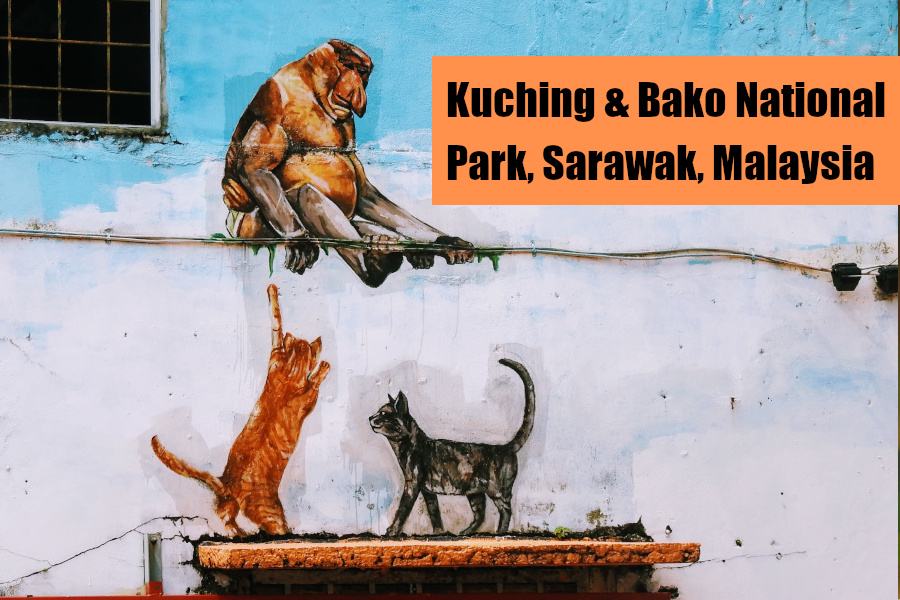
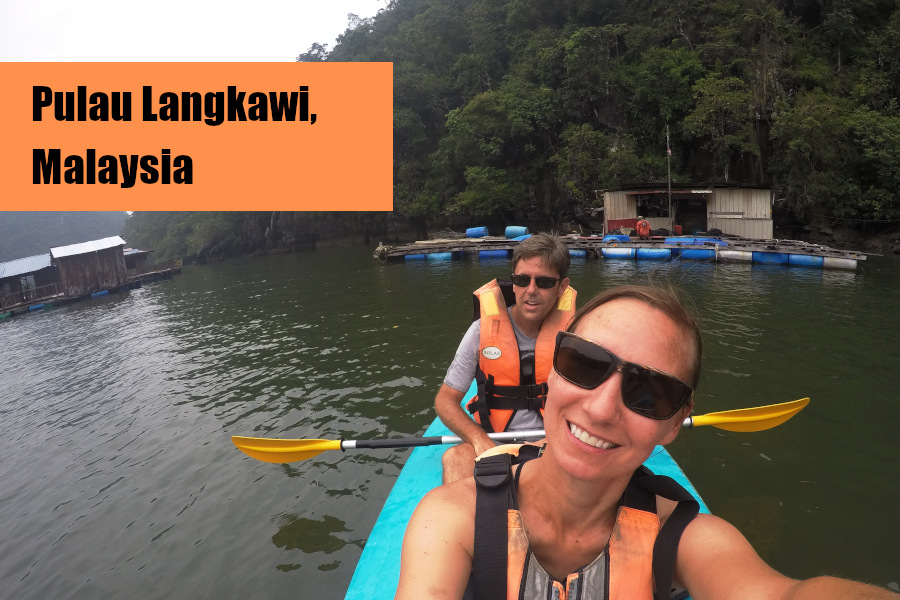
Wow! Such amazing photos and commentary! I can’t believe how close you were to the crocodile. The photos of the orangutans grooming each other and standing upright were so touching. And it looked like the proboscis monkeys were meditating. Maybe they were!
Thank you! The crocodile was scary!!! The different primates are always so fun to observe and photograph.